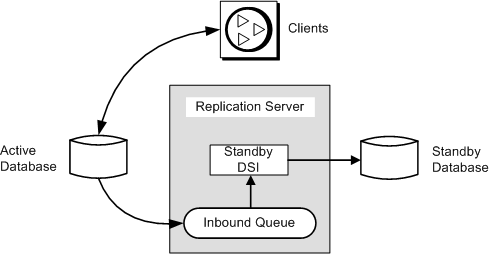Illustrates a warm standby application for a database that does not participate in the replication system other than through the activities of the warm standby application itself.
It represents the warm standby application in normal operation, before you switch the active and standby databases.
Figure: Warm Standby Application—Before Switching includes
internal details to show that:
Replication Server writes transactions received from the active database into an inbound message queue.
This inbound queue is read by the DSI thread for the standby database, which executes the transactions in the standby database.
Messages received from the active database cannot be truncated from the inbound queue until the standby DSI thread has read them and applied them to the standby database.
